Episode #7: William Morris in Walthamstow
Autumn's arrived, and so have the pumpkins. Blight is on its way.
The autumn equinox fell last Sunday, 22 September, which means that it is now officially autumn on plot, rather than just feeling like autumn, which it has done for at least two weeks now. While I’m not thrilled at the prospect of the daylight hours now getting shorter, and the early morning commute across London getting darker, I can’t wait to get stuck into turning the raised beds over and settling the plot for the winter. It is my favourite time of year - hopefully still bright and warm enough to work outside, but without the sweat and sunburn of summer.
Also last weekend I started to think about how many plants and trees on our allotment have come due to associations elsewhere: artichokes from William Morris textiles, for example. Others have been planted in memory of someone or something. There’s a rich context and memory to the planting, which isn’t always obvious.
This week’s Plot Shot
As autumn has arrived, there are pumpkins, suddenly visible everywhere across the site, and with them the dominant colour of produce turns from the reds of ripening tomatoes and apples to orange. The pumpkins have been hiding under leaves for weeks, but suddenly the leaves are shrivelling with mildew in the damp air.
The tomatoes won’t have much longer to go, as there are whispers that the damp weather will bring blight soon. I’m glad we probably have only one more tomato harvest left in the plants, of the darkest almost-black variety we have grown this year. Let’s hope it outruns the impending blight and we can harvest these next weekend.
Harvesting now
This week the plot has produced another 1.3 kilos of mixed tomatoes1, not as big as they were earlier in the season but the plants are still going strong and the fruit are ripening slowly.
And after a dire summer, the climbing and dwarf French beans are finally getting into their stride and giving us the odd handful of beans each week. French beans used to be our ‘sow them and leave them to it’ most reliable crop, and we’d end up with carrier bags full of beans which we’d leave on friends’ doorsteps. One of our friend’s daughters loved the purple climbing beans so much that she started eating them as snacks, then moved on to having them for breakfast, but they’ve almost failed for the last two years.
Springs have been long and wet, summers too dry and without enough sun, but we have a handful of beans, enough for a portion for two with a Sunday roast2. Long purple climbing ‘Cosse Violetto’ and green dwarf ‘Boby Bianco’. No sign of either of the yellows, though. The plants should keep going until there’s a frost, so there may be a few more handfuls before they are done.
There’s also been one more pear drop from our family tree, this week a solitary ‘Comice’, chubby like a child’s fist and held in its organza bag (which was at least one dress size too small by the time I got it off).
The Comice has turned my mind to an autumn salad of fine-sliced pear, blue cheese and walnuts, although probably on lettuce leaves as it isn’t quite time for bitter winter chicories and endives just yet.
Making and eating
Given the continuing tomato crop we’ve made more fresh tomato sauce to eat with pasta. Every year when we make fresh sauce I’m surprised at how sweet it is, and how it knocks the flavour socks off of anything ready-made and bought in a jar.
While I’m still hanging out for a good Italian apple and olive oil cake in the style of the late Marcella Hazan, husband Clive has been experimenting with the apple harvest in an effort to reverse-engineer his favourite Apple Chundo sauce from Dishoom, the chain of Indian restaurants styled on the old Irani cafés of Bombay.
Dishoom don’t publish the recipe, and their jars proudly proclaim it to be “Old family recipe (secret)”. A close inspection of the ingredients label to nail the spices, and our home-cooked ‘Dishoom-ish’3 version turned out pretty well. The texture isn’t quite right yet (apples still in quite solid chunks and not quite stewed down loosely enough), and the colour suggested that there was a little too much turmeric in the spice mix, but the taste was great. We bought thick-cut pork chops specially.
Local Hero
We’ve started to clear the plot of summer crops, so the monster cardoon and artichoke plants have come down. They’ve done their job for the season, their tall purple-blue flowers attracting pollinating insects to the plot. It always feels like the end of the summer when we cut down the plants.
Heaving all the dry flowers and stalks into the wheelbarrow reminded me that local hero William Morris was a big fan of artichokes and used them in his textile designs. I spent several minutes trawling internet pages looking for the design I had in mind, until my brain kicked in and I realised that it is staring at me from a cushion on my sofa at home. Good colour matching is a Morris thing.
The revolutionary designer, craftsman, writer, radical socialist and social activist, William Morris, regarded as the founder of the Arts and Crafts Movement in the UK, is a Local Hero in E17. He was born in Walthamstow and his former family home, The Water House, is now internationally famous as the William Morris Gallery, which is a few streets away from our house, fewer still from the allotment.
When I first moved to Walthamstow, Water House was almost derelict and the upper floors were shut up. There were only a few rather sad items on display in dusty cases, and the house was almost never open, due to a lack of funding. Morris would have been horrified. Beautiful and useful it was not. It was a dump.
‘Have nothing in your house that you do not know to be useful, or believe to be beautiful.’
(William Morris, ‘The Beauty of Life’ lecture given at Birmingham Society of Arts and School of Design, February 1880.)
I can remember going to public meetings called to gather support for redeveloping the gallery and restoring the collection. Arts and Crafts design experts came from Sothebys and art schools to oppose Morris’s work being packaged off to the vaults of the Victoria and Albert Museum, as it had been gifted to the people of Walthamstow.
The restoration eventually happened in 2012 and the Gallery now houses the largest collection of Morris’s work, is the only public museum dedicated to Morris. The new William Morris Gallery was awarded as the Art Fund Museum of the Year in 2013.
Reader, we liked it so much that my husband Clive and I got married there. As I remember, ours was only the second wedding the Gallery had hosted.
In case you think I’ve meandered quite a way from the allotment at this point, we were bought a pair of ‘William Morris’ rose bushes, and a spiky Acanthus spinosus in a pot as wedding presents. (Our guests really went with the Morris theme.)
Sadly, like several of our climbing roses on the allotment and the much-missed ‘Munstead Wood’, ‘William Morris’ is one of the varieties of rose which the breeder David Austin has discontinued so it is no longer available. Ours bloom reliably every year from May until October, if not later. The blooms in this photo are from last weekend, but I haven’t counted any roses as cut flowers in this week’s plot tally.4
Community of Practice
I had hoped this week to kick off the Community of Practice section with epic tales of pruning fruit trees on the plot. Tree pruning techniques are one of the great aspects of allotment practice, and I learn more about how to prune a tree every time I try.
One of our plot neighbours has bought a small hand-held battery chain saw, (which looks either exciting or terrifying, depending on how close I am to the first aid kit) and we’ve all been keen to give it a go, especially as our plot has a scruffy damson and a lanky greengage which are both in need of renovation. They’ve produced the fruit in a lot of our jams this year and the weight of fruit has bent the trees out of shape.
Both trees need bringing down to a useful height (trying to harvest small plum-like fruit 3-4 meters off the ground isn’t fun!), but the weather was too damp to risk opening wounds on the trees, as that’s how the spores of silver leaf and other fungal infections spread. Prunus stone fruit (plums, cherries, apricots) are especially susceptible to silver leaf.
Hopefully more next week, weather permitting.
Tomatoes, mixed speciality 1.3 kg, £11
French beans, 250g, £0.98
Dishoom apple chundo, currently £6.80 per jar online.
Total for this week £18.78, total to date since Ep5 £88.93, based on current local supermarket prices.

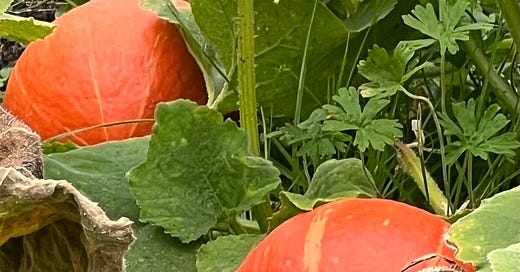



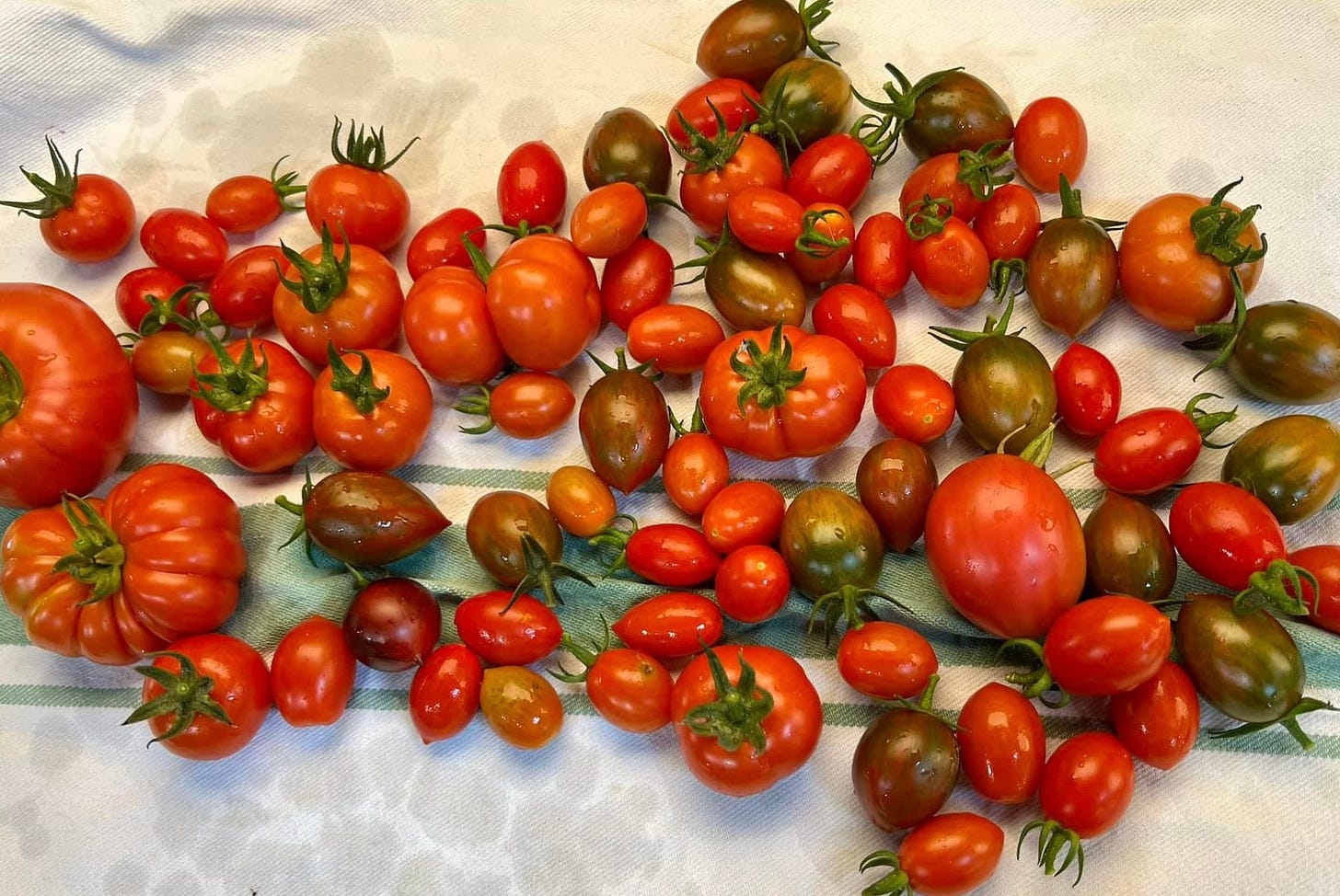
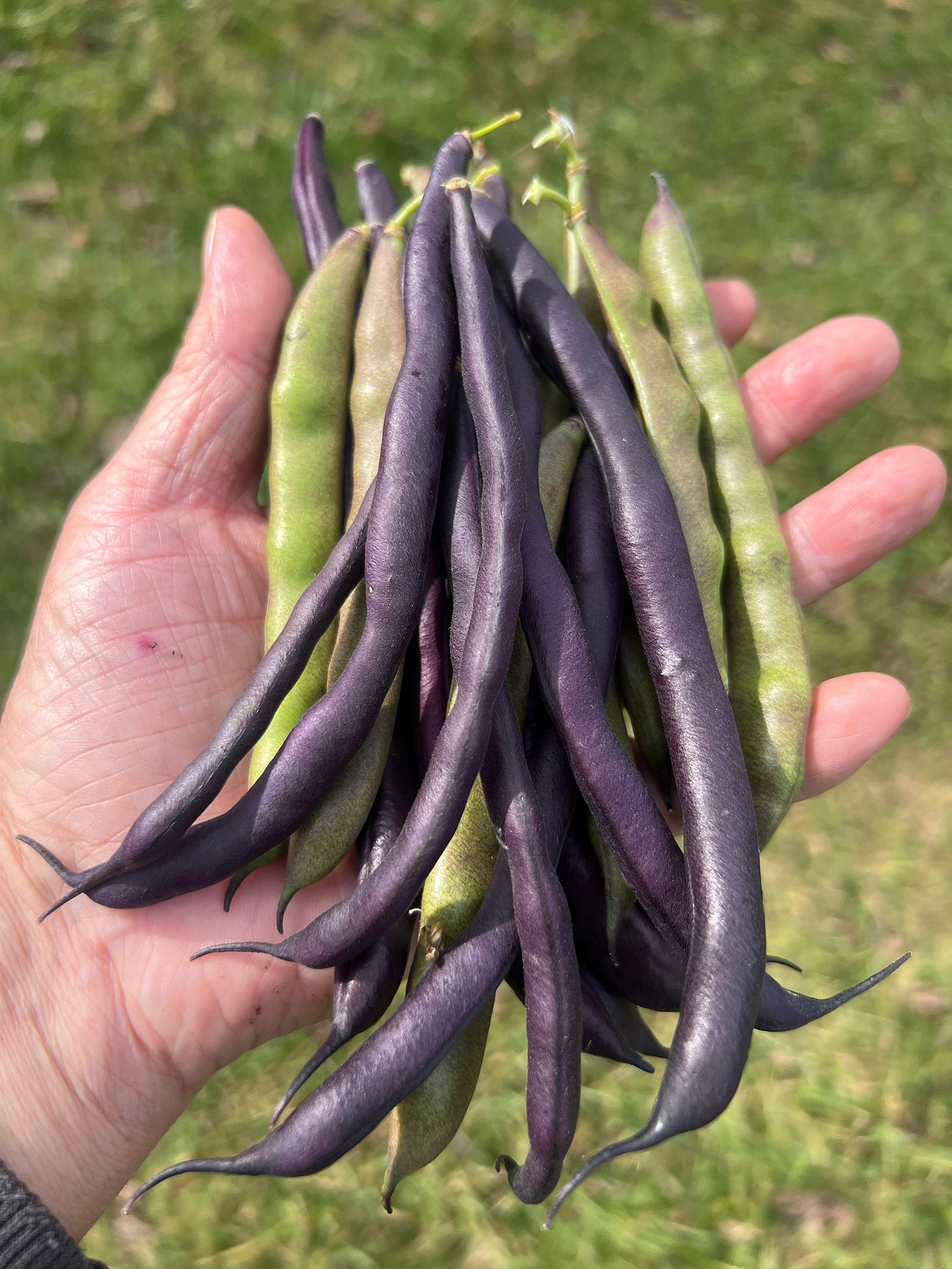
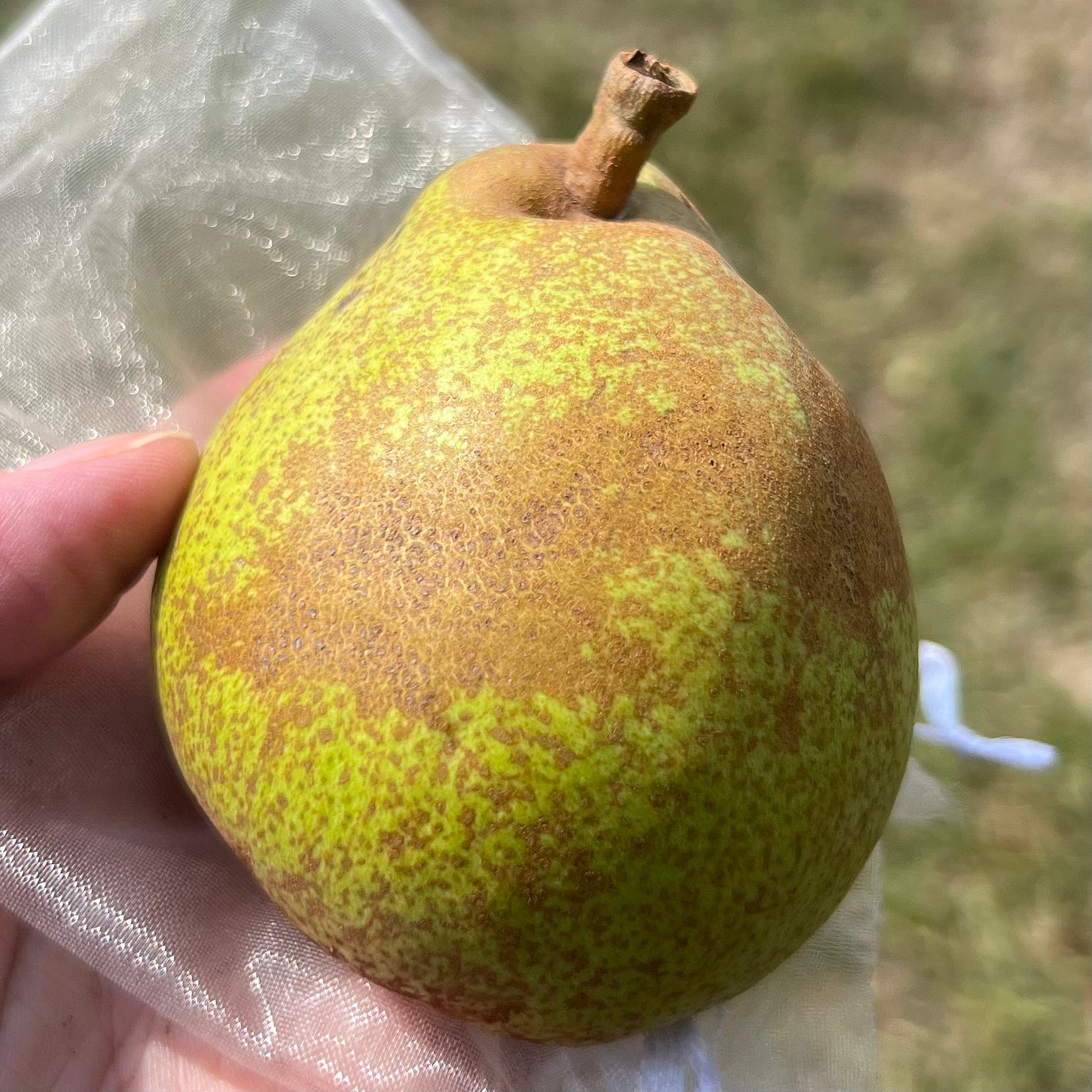
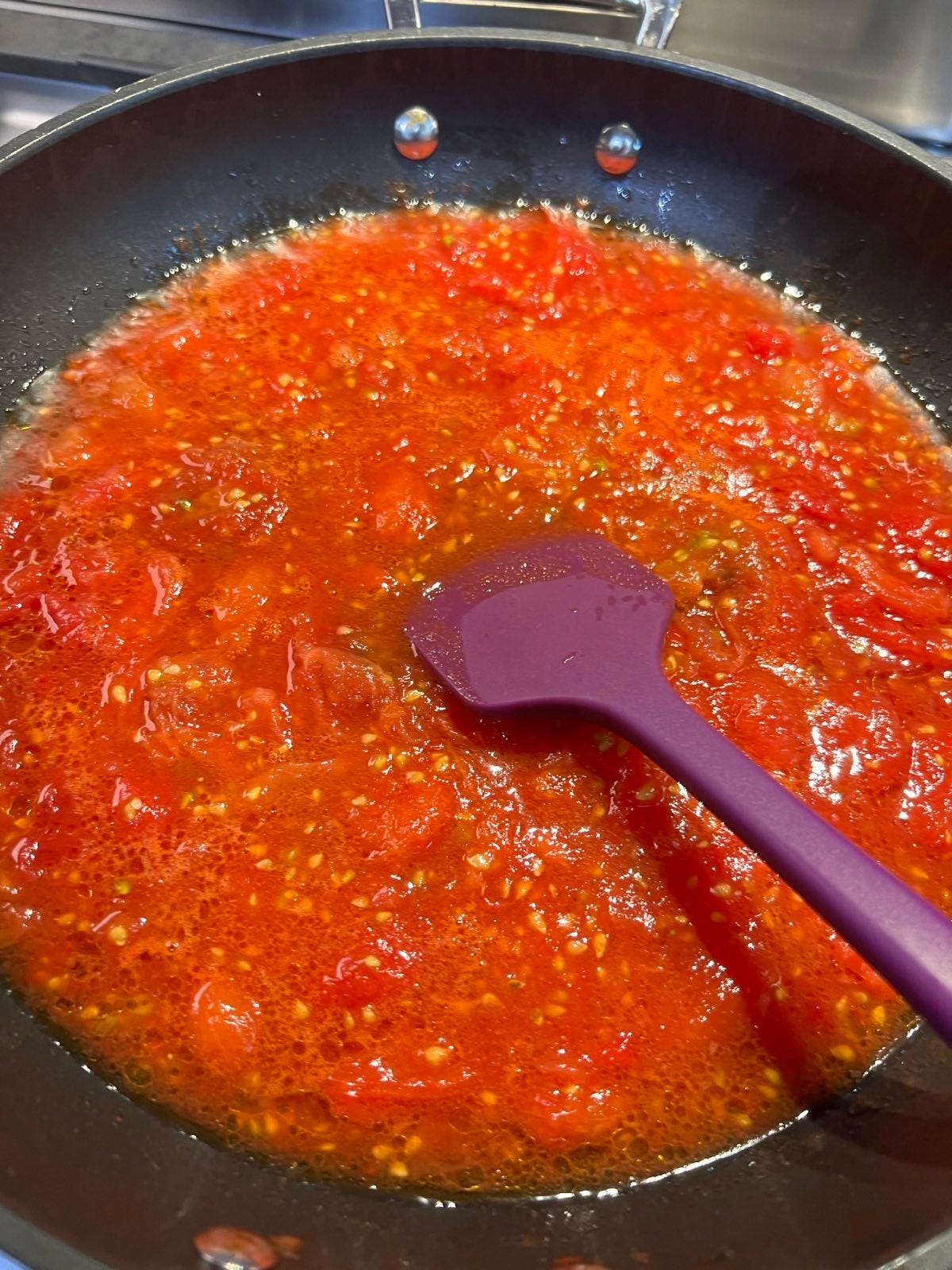
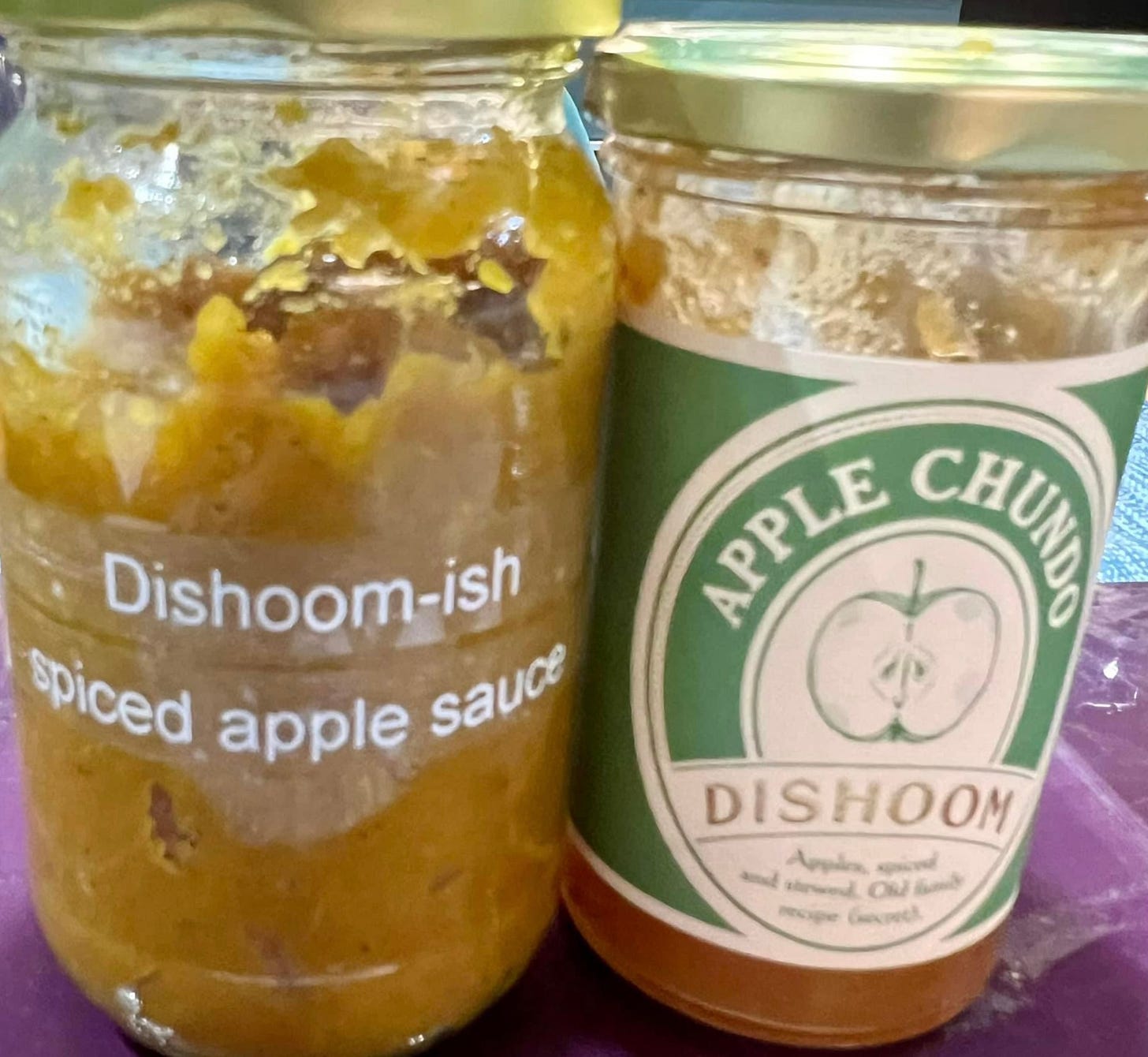
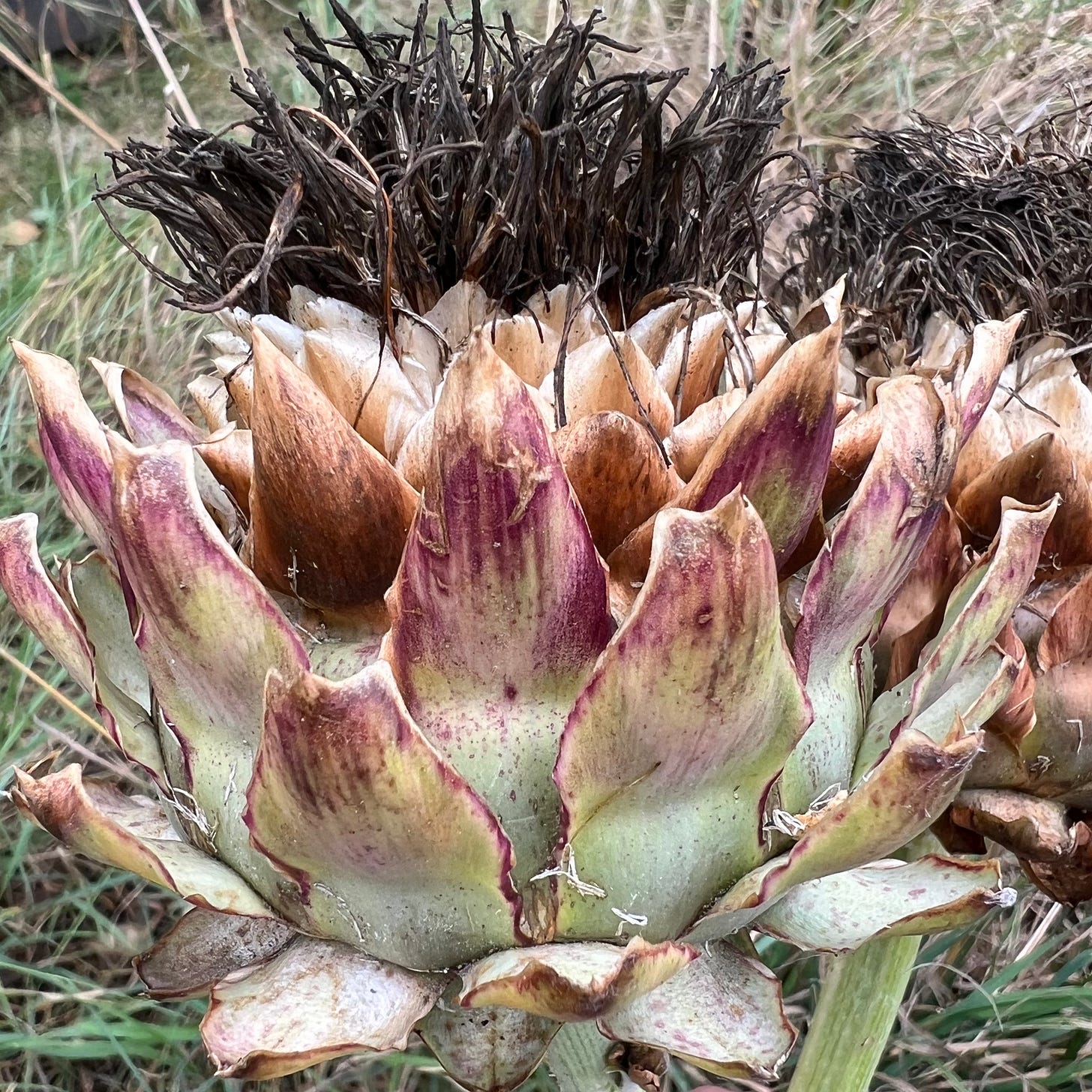
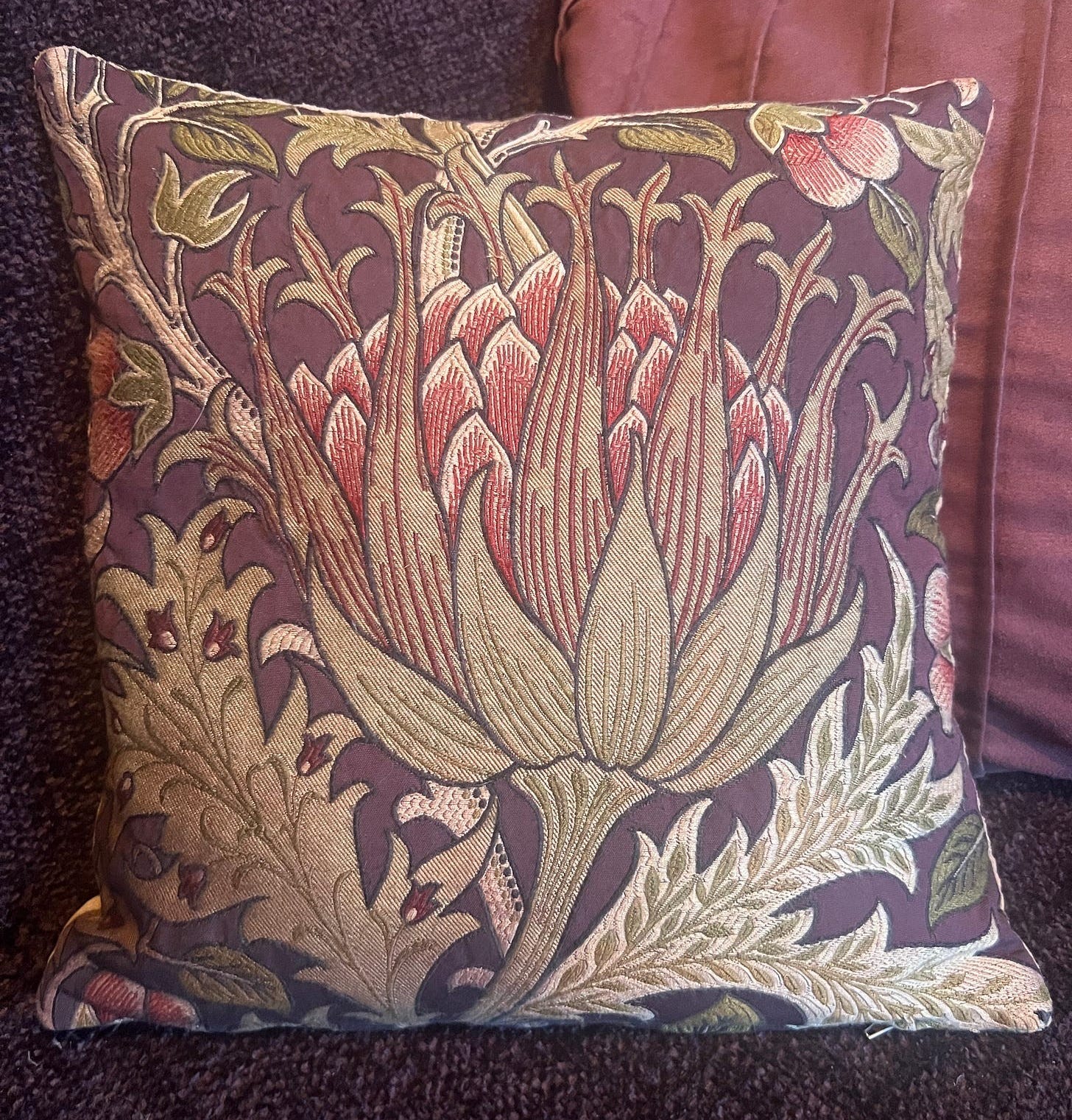

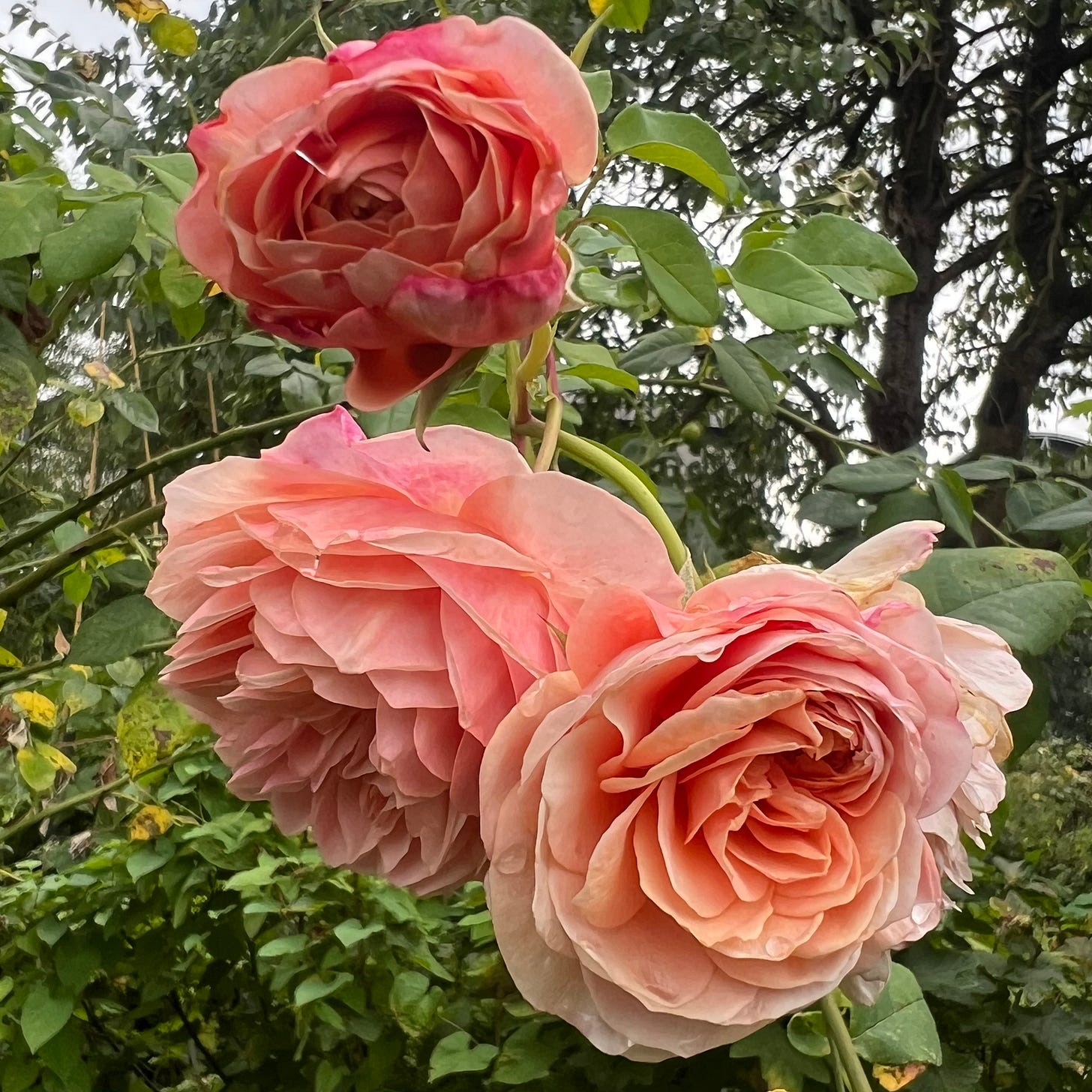
I love your writing, you’re a natural. The silver leaf thing is real. I ruined (killed) a cherry by trimming the branches at the wrong time. Similarly a pear tree. But why won’t some of my prunus spinosa do the decent thing and quietly die?! My rural garden is overrun with them and at present, the trees are dripping with the sloes. I can’t give them away so I might have to try sloe gin-making for the first time. My garden space very different to yours but that doesn’t mean I don’t enjoy reading about your allotment. So keep at it, you’re doing great 👍